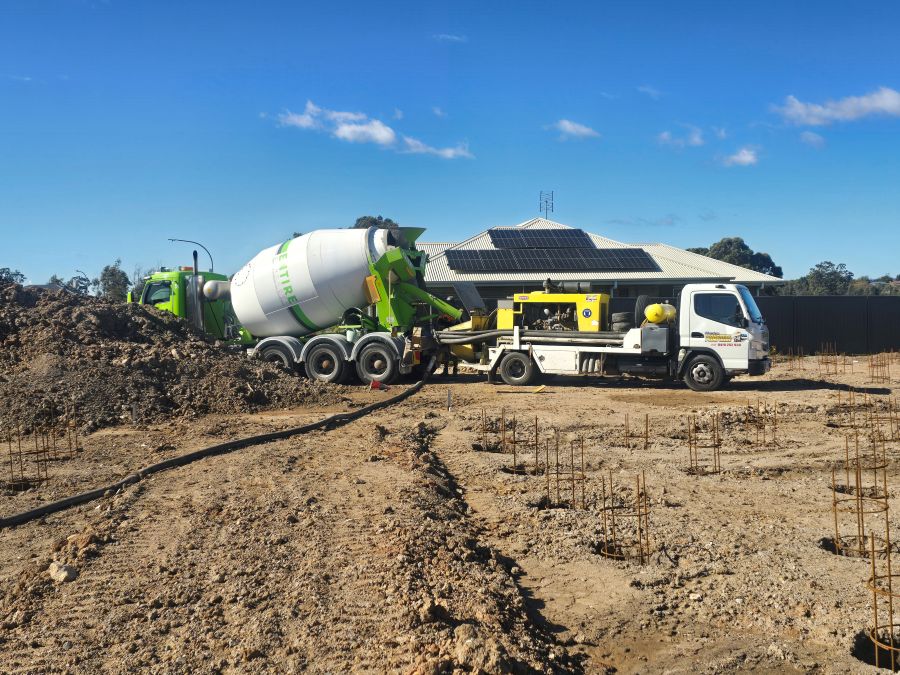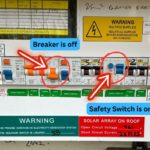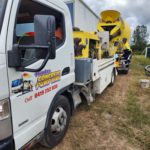Essential Best Practices for Safe Concrete Pumping in 2025
In the realm of concrete pumping safety for 2025, the focus is on comprehensive training, meticulous equipment checks, clearly defined exclusion zones, and detailed pre-start planning. Understanding the potential risks associated with concrete pumping and adhering to established safety protocols is crucial for preventing injuries and ensuring that the project stays on schedule. By prioritising safety measures, workers can create a secure work environment that fosters efficiency and productivity.

Identifying Common Hazards in Concrete Pump Operations
According to SafeWork NSW, operators and workers involved in concrete placement face various serious risks when setting up or operating concrete pumps. These potential hazards include:
- Unstable ground or inadequate setup on sloped surfaces, which can lead to accidents.
- Utilisation of equipment beyond its design specifications, increasing the risk of failure.
- Contact with overhead power lines, posing serious electrocution hazards.
- Collisions with trucks, structures, or site personnel, which can result in injuries.
- Hose whip and line surges, which can cause dangerous situations if not controlled.
- Unexpected equipment failure and blockages that could halt operations.
- Exposure to crush zones, diesel fumes, and excessive noise, which can impact health.
- Slip, trip, and confined space hazards that can lead to serious injuries.
These risks are not merely theoretical; they manifest when safety procedures are overlooked or not consistently enforced. This is why our focus remains on the critical aspects of safety on-site, ensuring that every worker understands and follows the established protocols.
1. Ensure All Crew Members Are Trained and Certified
Concrete pumps operate under high pressure, necessitating strict handling requirements for operators. In NSW, it is mandatory for operators to possess:
- An HR licence for operating boom trucks, ensuring they are qualified.
- Verified VOCs (Verification of Competency) to confirm their skill level.
- Training in hazard recognition and understanding of emergency stop procedures.
Additionally, hose handlers should be thoroughly briefed to ensure they avoid standing in discharge zones and are able to identify blockages early, which is vital for maintaining operational safety.
2. Implementing Exclusion Zones for Enhanced Safety
Concrete that is under pressure moves rapidly and can be extremely dangerous if released unexpectedly. For this reason, it is essential to have clearly marked safety zones surrounding the hose and boom at all times. The safety measures include:
- Using barriers and flagging to delineate risk areas around the pumping operation.
- Prohibiting personnel from standing in front of the discharge area to avoid injury.
- Restricting movement under booms to eliminate the risk of accidents.
3. Conduct Thorough Equipment Checks Prior to Every Pour
Each concrete pumping job begins with a comprehensive equipment inspection. At Hunter Concrete Pumps, we conduct detailed checks on:
- Hoses and reducers to ensure they are in optimal condition.
- Couplings and clamps for secure connections.
- The integrity of the boom and seals to prevent leaks.
- Primer levels, ensuring the pump operates smoothly.
- Emergency shutoff systems to guarantee immediate response capabilities.
No operation commences unless the pump has successfully passed every inspection, reinforcing our commitment to safety and efficiency.
4. Assign a Lead Operator for Effective Coordination
Effective communication is paramount in concrete pumping operations. Each crew must designate one lead operator responsible for overseeing the pour. They ensure coordination with:
- Agitator drivers for synchronised operations.
- Hose handlers to manage the flow of concrete safely.
- Site supervisors for compliance with site regulations.
- Concreters and finishers to achieve the desired results.
This clear chain of command is essential for preventing mistakes and misfires, thereby enhancing the overall safety and efficiency of the operation.
5. Initiate Every Pour with a Comprehensive Safety Briefing
Before commencing the pump operation, it is crucial for the crew to cover several key topics, including:
- Access to the site and hose routing for optimal flow.
- Emergency response plans and first aid protocols.
- Truck staging and washout procedures to maintain site cleanliness.
- Identifying slip risks and ensuring appropriate use of PPE (Personal Protective Equipment).
- Roles of spotters where necessary to enhance safety.
At Hunter Concrete Pumps, we implement these protocols rigorously on every job, without exception, to ensure the safety of our crew and the integrity of the project.
Understanding the Importance of Safety in Concrete Pumping
Ensuring safe concrete pours not only protects your crew but also safeguards your project schedule, budget, and reputation. A lapse in safety can lead to injuries, project delays, or regulatory scrutiny, which are risks that cannot be overlooked. We adhere strictly to the SafeWork NSW guidelines for concrete pumping on every job. Our operators are not only trained but also licensed and insured, ensuring that when you choose us, you are opting for a service where safety is integrated into the entire process.
Do I need to provide spotters or safety personnel for my concrete pour?
For civil and commercial sites, the answer is yes; spotters or safety personnel are required to maintain safety standards. However, for residential projects, our dedicated pump crews effectively manage the safety zone, keeping the site secure. We will inform you of any requirements during the quoting process to ensure clarity and compliance.
What Are the Most Common Safety Risks Associated with Concrete Pumping Jobs?
The three predominant risks include untrained hose handling, inadequate access planning, and the absence of exclusion zones. We proactively address all three of these issues before the concrete pour begins, ensuring a safer working environment for everyone involved.
Achieve Smooth and Safe Concrete Pours with Our Expertise
Concrete pumping safety is not about excessive regulations; rather, it is about ensuring the job is completed without injury or delays. When your team is well-versed in safety procedures and your operator arrives fully equipped and prepared, the concrete pour can proceed smoothly, quickly, and without complications.
Concrete Pump Hire



It’s fascinating to see the emphasis on safety in concrete pumping as we move into 2025! The mention of systematic training and pre-start planning resonates with me, especially given how often we overlook the basics in pursuit of efficiency. In my experience, having a thorough checklist not only helps mitigate risks but also empowers the team—everyone feels more confident when they know potential hazards are being addressed.
You’ve touched on some really critical aspects of concrete pumping safety, which often doesn’t get the attention it deserves. In my experience on construction sites, the emphasis on thorough training cannot be overstated. I remember a job where an operator wasn’t fully trained on the specific pump we were using. The result? A near miss that could have ended very badly. It’s a stark reminder that investing time in proper training pays off not just in safety but also in efficiency.
Your exploration of best practices for safe concrete pumping in 2025 underscores the vital importance of a proactive approach to safety in the construction industry, a topic that is sadly often relegated to the background until an incident occurs. The emphasis on comprehensive training and meticulous equipment checks aligns perfectly with my experience in the field. When I worked on a large-scale construction project, it was evident that the teams that prioritized routine training sessions and thorough inspections were not only more efficient but also navigated potential hazards with far greater proficiency.
It’s interesting how safety often takes a backseat until something goes wrong, isn’t it? Your experience on that large-scale project really highlights a crucial point: the teams that are proactive about training and inspections not only create a safer environment but also operate more effectively. I’ve seen similar trends in other sectors too, where a focus on continual education makes a tangible difference, whether in healthcare, manufacturing, or even the tech industry.
You’ve brought up some critical points regarding safety in concrete pumping, especially as we navigate the complexities of 2025. I find it particularly interesting how proactive measures like detailed pre-start planning can significantly reduce the likelihood of accidents.
It’s refreshing to see such a focus on safety in concrete pumping, especially as we navigate the complexities of construction in 2025. The emphasis on comprehensive training and pre-start planning truly resonates with me. It’s a reminder that investing in our workforce not only enhances safety but also boosts morale and productivity.
The focus on safety in concrete pumping as outlined here really resonates with me. As someone who has worked on various construction sites, I’ve seen the critical importance of thorough training and planning firsthand. It’s fascinating how a proactive approach to safety not only protects workers but can significantly enhance overall productivity.